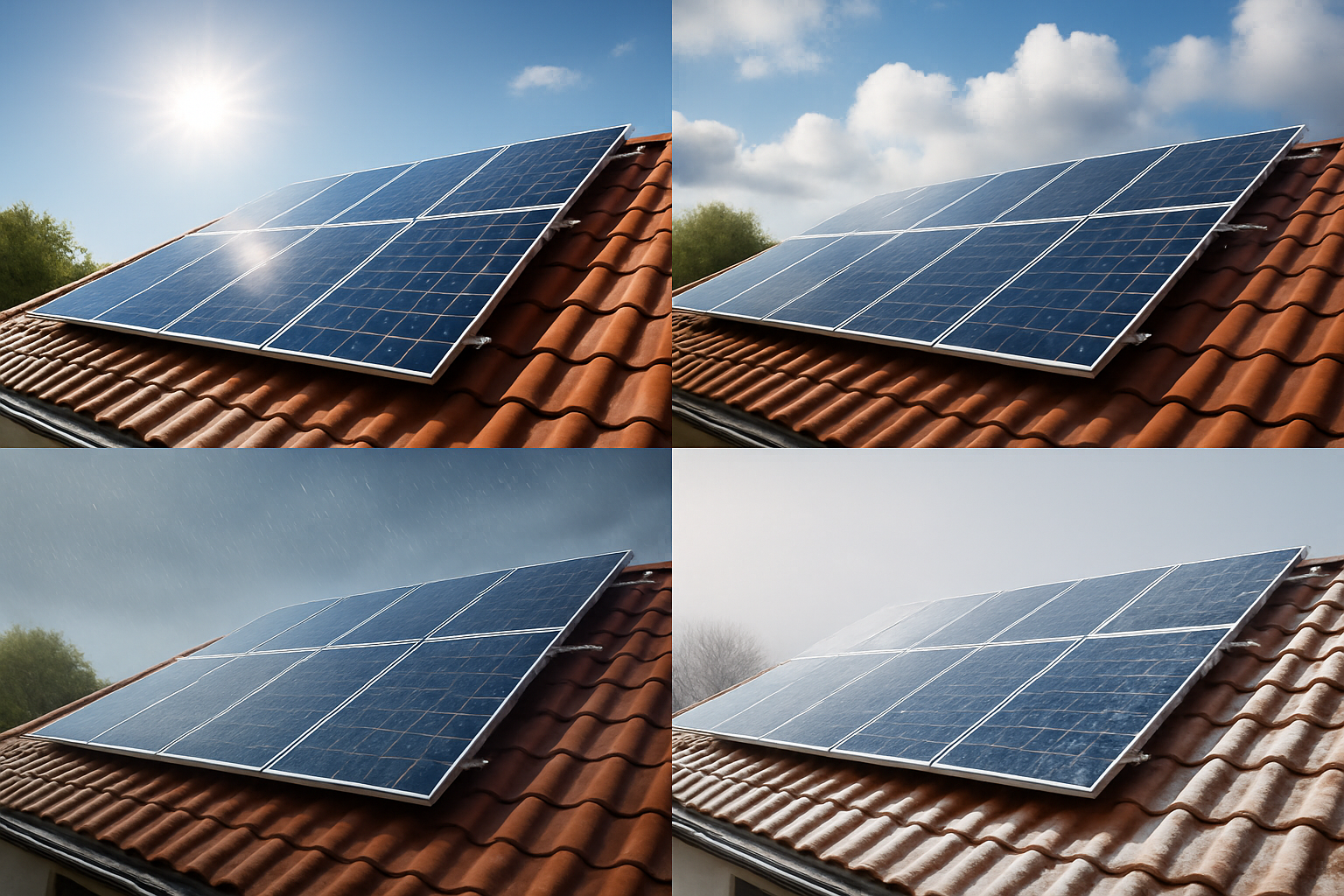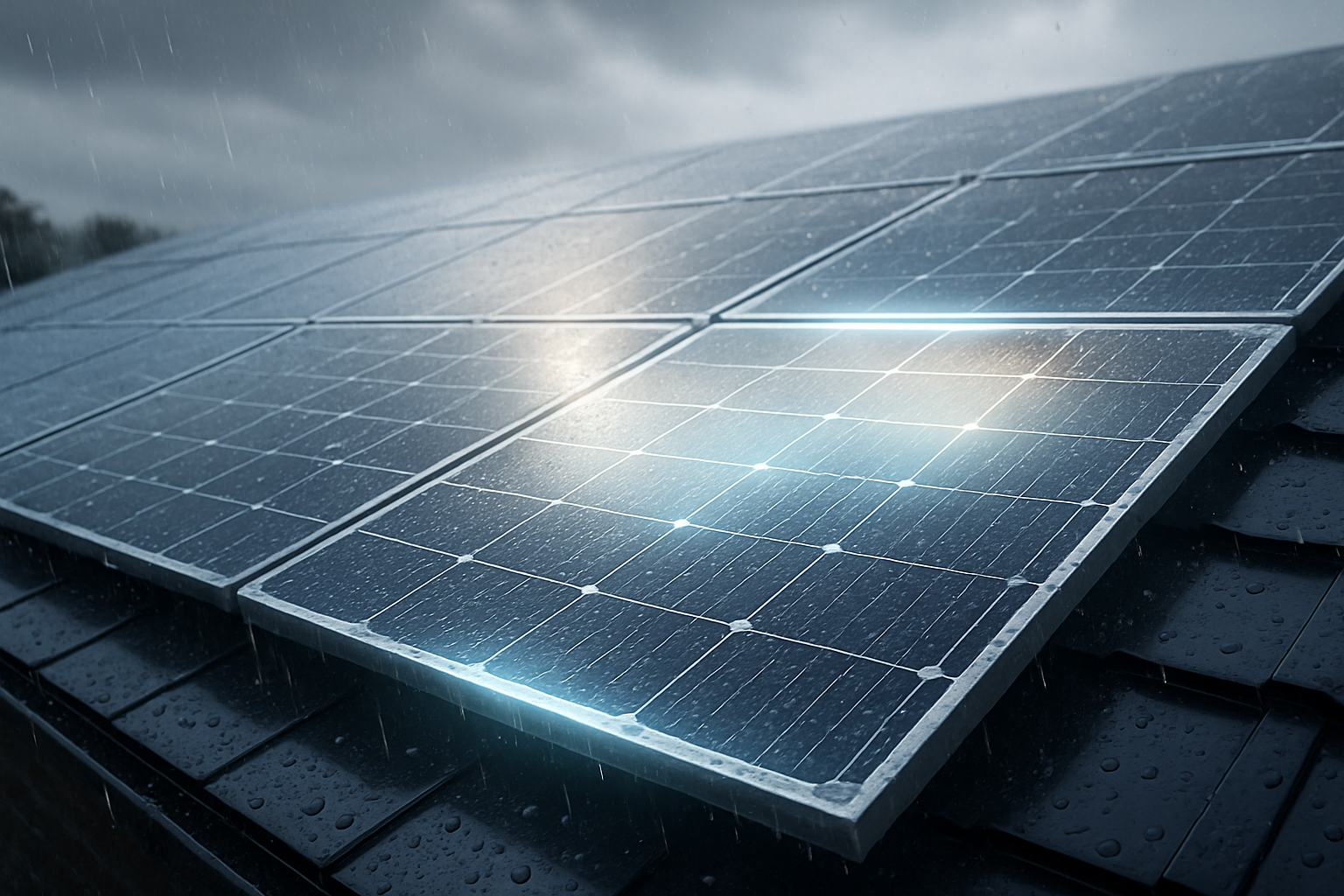Solar energy offers a powerful path to energy independence and a sustainable future. Many individuals and businesses are embracing this clean power source. While the sun provides abundant energy, its availability can fluctuate with varying weather conditions, particularly cloud cover and high temperatures. Understanding how these factors influence solar panel performance and implementing effective optimization strategies allows you to maximize your solar investment. This guide explores practical approaches to maintain robust solar output, even when the weather is less than ideal.
Understanding Solar Panel Performance in Varying Conditions
Solar Panels and Cloud Cover
Clouds significantly affect the amount of sunlight reaching your solar panels. When direct sunlight is blocked, panels primarily receive diffuse light, which is scattered light from the sky. This diffuse light can still generate electricity, but typically at a reduced capacity compared to direct sunlight. The extent of this reduction depends on several factors, including the cloud's size, thickness, and shape, as well as other atmospheric conditions.
Solar power output varies with the intensity of sunlight, which clouds and fog can affect. These aspects can change rapidly and are localized, making them challenging to anticipate for grid operators.

The Impact of Heat on Solar Efficiency
While sunlight is essential, high temperatures can paradoxically decrease solar panel efficiency. Solar panels are semiconductors, and their performance is optimal within a specific temperature range. As the temperature of a solar panel increases beyond this optimal point, its voltage decreases, leading to a reduction in power output. This phenomenon is quantified by a "temperature coefficient," which indicates how much a panel's efficiency degrades for every degree Celsius increase above a standard test temperature (typically 25°C).
For most silicon-based solar panels, efficiency can drop by approximately 0.3% to 0.5% for every degree Celsius above 25°C. This means that on a scorching 40°C day, a panel's efficiency could be 4.5% to 7.5% lower than its rated performance under standard conditions. Proper thermal management becomes crucial in hot climates to mitigate this effect.
Optimizing Solar Output in Cloudy Conditions
Advanced Panel Technology and System Design
Choosing the right solar panels and system configuration can significantly improve performance in less-than-ideal conditions. Panels designed with better low-light performance can capture more energy from diffuse sunlight. Furthermore, the orientation and tilt of your solar panels play a vital role. For instance, in temperate regions, a greater tilt towards the equator can increase winter output, though it may decrease summer output.
Tracking systems, which allow solar panels to follow the sun's path throughout the day, can substantially increase energy production. Single-axis trackers can generate 12-25% more electricity annually than fixed systems in areas with high insolation. Dual-axis tracking can further boost yield by an additional 10-15%, although these systems come with higher installation and maintenance costs.
Consider the benefits of micro-inverters or power optimizers. These devices manage each panel individually, meaning that if one panel is shaded by a cloud, it does not significantly impact the performance of other panels in the array, unlike traditional string inverter setups.
Integrating Energy Storage Solutions
Energy storage systems are a cornerstone of reliable solar power, especially in variable weather. By integrating high-performance and reliable lithium iron phosphate (LiFePO4) batteries, you can store excess energy generated during sunny periods. This stored energy becomes available when solar production is low, such as on cloudy days or at night. A robust home energy storage system, combining lithium batteries with a hybrid inverter and solar panels, ensures a consistent power supply and moves you closer to energy independence.
This approach allows you to capture solar energy when it is most abundant and deploy it when needed, smoothing out the fluctuations caused by changing weather. It provides resilience and continuous access to clean energy.
Smart Monitoring and Forecasting
Modern solar systems often include advanced monitoring capabilities, allowing you to track your energy production and consumption in real-time. This data helps identify performance issues and optimize usage patterns. Beyond monitoring, solar forecasting tools are becoming increasingly sophisticated. Platforms like the Solar Forecasting Arbiter, supported by the U.S. Department of Energy, help assess the reliability of solar generation estimates over short periods, like 24-48 hours.
These tools can help grid operators and homeowners anticipate periods of low solar output due to cloud cover, enabling better planning for energy use or drawing from stored reserves. Improving solar irradiance and power prediction, including quantifying the impacts from clouds, is a focus of ongoing research.
Enhancing Solar Output in Hot Climates
Cooling and Ventilation for Solar Arrays
Mitigating heat's impact on solar panels involves effective cooling and ventilation. Proper installation ensures adequate airflow beneath and around the panels. Mounting systems that allow for sufficient space between the panels and the roof surface promote natural convection, dissipating heat more effectively. In some larger installations, active cooling solutions or reflective coatings on the roof can further reduce panel temperatures, preserving efficiency.
Selecting Temperature-Resistant Solar Panels
When planning a solar installation in a hot climate, consider panels with a lower temperature coefficient. Panels with a temperature coefficient closer to -0.3% per °C will experience less efficiency degradation in high temperatures compared to those with a coefficient of -0.5% per °C. While all silicon-based panels are affected by heat, some manufacturers produce panels engineered to perform more stably in warmer conditions.
Optimizing Inverter Placement
Solar inverters, which convert the direct current (DC) produced by panels into usable alternating current (AC), also generate heat and can be sensitive to high temperatures. Placing inverters in well-ventilated, shaded areas, such as a garage or a cool utility room, helps maintain their operational efficiency and extends their lifespan. Ensuring proper airflow around the inverter prevents overheating and performance reduction.
Building Resilient Energy Systems
Integrated Home Energy Solutions
Achieving true energy independence involves more than just solar panels; it requires a holistic approach. An integrated home energy system seamlessly combines solar panels, a solar inverter, and a robust battery storage system. This comprehensive setup manages energy flow intelligently. For example, during peak sunlight hours, your solar panels generate electricity for immediate consumption, charge your lithium iron phosphate batteries, and can even send excess power back to the grid. When solar generation is low, your home draws power from the stored energy in the batteries, ensuring uninterrupted supply. Our expertise in developing integrated ESS, which includes high-performance LiFePO4 batteries, hybrid inverters, and solar panels, provides a reliable and scalable energy solution for your home.
Off-Grid and Hybrid Power
For properties seeking complete autonomy, off-grid solar solutions offer independence from the utility grid. These systems are particularly beneficial for remote homes, farms, or cabins where grid access is unreliable or unavailable. They rely heavily on a well-sized solar array and a substantial battery bank to meet all energy demands. Our off-grid solar solutions, powered by reliable LiFePO4 batteries and efficient solar inverters, are designed to provide consistent power in diverse environments, helping you achieve true energy self-sufficiency.
Achieving Sustainable Energy Independence
Optimizing your solar energy system for various weather conditions, including cloudy skies and high temperatures, is a practical step towards a more reliable and sustainable energy future. By understanding how environmental factors influence solar panel efficiency and by implementing advanced technologies, smart energy storage, and thoughtful system design, you can maximize your solar output year-round. Investing in resilient energy solutions empowers you to achieve greater energy independence, reduce your carbon footprint, and enjoy consistent power regardless of external conditions. We are committed to providing reliable and scalable energy solutions, helping you unlock the full potential of solar power.





Leave a comment
All comments are moderated before being published.
This site is protected by hCaptcha and the hCaptcha Privacy Policy and Terms of Service apply.